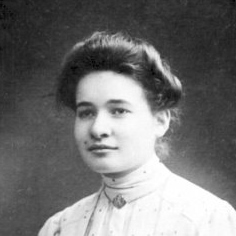News
Warsaw ghetto’s superhuman medics died to save lives
When Polish paediatrician Dr Tola Mintz chose to commit her life to healing others, she remained steadfast to the point of dying for her decision.

JORDAN MOSHE
She refused an opportunity to escape the death camps, and deliberately boarded a deportation train bound for Treblinka in 1943, convinced that she could care for patients being sent to their deaths.
Mintz is just one of the superhuman figures whose stories were brought to light at Limmud Johannesburg last weekend by Luc Albinski, a Polish businessman who now lives in Johannesburg.
Albinski shared the stories of the lives of the Warsaw Ghetto’s most committed medical practitioners. He was inspired by his own grandmother, Dr Halina Rotstein, who died in 1942 in similar circumstances.
“The Warsaw ghetto had an impressive medical system in spite of its circumstances,” said Albinski. “A total of 830 Jewish doctors served ghetto patients, using 18 pharmacies, and two professional hospitals.
“They fought to maintain a public-health system in spite of the epidemics caused by the circumstances they lived in. These epidemics claimed about 100 000 lives, yet they pushed to conduct medical research and save people.”
Albinski said that even under the privations of ghetto life, the Jewish doctors of Warsaw maintained a medical laboratory, a nursing school, even a medical university, all within the confines of the ghetto.
He outlined the brief and often tragic lives of these medical heroes. One of these was Zofia Zamenhof, a paediatric specialist who was also the daughter of Ludwig Zamenhof, the man who created the universal language Esperanto.
“Zofia studied in St Petersburg. She qualified, and moved to Warsaw, where she joined the Czyste Jewish Hospital.”
The hospital was one of the best in its time, made up of 17 buildings, eight pavilions, a shul, and an array of laboratories. It had about 1 500 beds, and was under the directorship of Zamenhof’s brother, Adam, an accomplished ophthalmologist.
When the Nazis invaded Poland, he, his sister and Adam’s wife, Wanda, were imprisoned. Though the women were released, Adam was executed as a threat to the invading forces.
In 1942, Wanda and Zofia were listed for deportation, and were taken to the dreaded Umschlagplatz to board the trains bound for certain death. “While waiting to board, Wanda and her son successfully disguised themselves, and were able to escape using forged papers arranged by a Catholic priest, Marceli Godlewski,” said Albinski.
Godlewski, originally a rabid anti-Semite, ministered to about 2 000 Jews who had converted to Catholicism. His views had changed in response to the suffering he witnessed. His efforts resulted in about 100 meals being distributed daily, as well as the creation of thousands of forged identity documents used by Warsaw Jews to escape. He was eventually recognised by Yad Vashem as a Righteous Among the Nations.
“Godlewski arranged the necessary documents for Wanda and her son. He did the same for Zofia, but she refused to accept the papers,” said Albinski.
“Instead she decided to escort the patients under her care to the trains bound for the camps. She went with them to Treblinka.”
The story of Albinski’s grandmother is much the same. Halina Rotstein came from a family of doctors and graduated as doctor herself in 1930. While working in Warsaw at the medical university, she met and married Dr Stanislaw Szenicer, though they divorced shortly thereafter.
Szenicer was one of the unfortunate souls selected by the Nazis to choose patients for deportation to their deaths in the various camps. “The Nazis told him he could keep a maximum of 150 patients,” said Albinski. “He tried to walk through the ward without looking at people to select those who would be taken to Treblinka. He couldn’t do it, told the Nazis they could do it themselves, and fled.” In 1944, he took his own life.
Albinski’s grandmother married Wladlyslaw Rotstein, an engineer whose family ran the Chrysler manufacturing plant in Poland. Rotstein would be pursued by the Nazis and flee, only to be intercepted by the Soviets and sent to work for the Red Army in Russia.
Halina was left with three children (among them Albinski’s mother) and continued to save lives in Warsaw, tending to abandoned babies left on train platform after deportations. In addition, she involved herself in emergency surgery, caring for Jewish patients who had been injured by Nazis, sometimes fatally.
“Even when the patients were certainly going to die or be sent to their deaths, she helped them,” says Albinski. “She was offered papers to escape, but gave them away to someone else. She turned down a second set of papers, and instead accompanied her 900 patients along with 50 staff members in 1942 to the camps where she died.” Albinski’s mother and her siblings were successfully smuggled out of the ghetto, and taken to a Catholic orphanage.
Each story reinforced the everyday heroism of Warsaw’s Jewish medical practitioners, Albinski said.